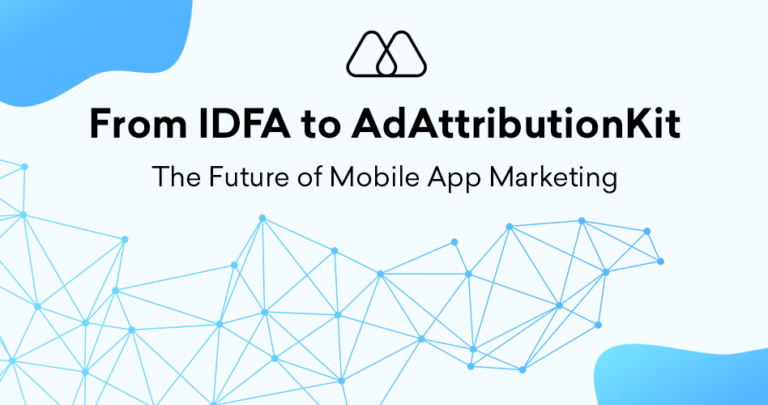User acquisition is the first step in the fiercely competitive mobile app landscape. The true test lies in keeping users engaged and actively using your app. Here’s where the concept of Retention Rate takes center stage. It serves as a critical metric, reflecting the percentage of users who continue to engage with your app beyond the initial download. Understanding and optimizing your retention rate is paramount for achieving long-term success in mobile app advertising.
What is the Retention Rate in Mobile App Advertising?
The Retention Rate for mobile app advertising refers to the percentage of users who remain active within your app over a specific period after installation. There are various ways to define “active,” such as logging in, completing an action, or making an in-app purchase. By analyzing user behavior data, you can calculate retention rates for different timeframes, such as Day 1, Day 7, Day 30, and beyond. These insights are invaluable for gauging user engagement and uncovering areas for improvement within your app.
Why is Retention Rate Important in Mobile App Advertising?
Retention Rate holds immense significance for mobile app marketers for several reasons:
- Predicts Long-Term Value: A high retention rate indicates a loyal user base, translating to a more sustainable revenue stream. Retained users are more likely to make in-app purchases, view ads, and become brand advocates, ultimately contributing to higher lifetime value (LTV).
- Reduces User Acquisition Costs: Acquiring new users can be expensive. By focusing on retaining existing users, you maximize the return on investment (ROI) from your user acquisition efforts. Existing users are also less likely to churn, requiring you to spend less on constantly replenishing your user base.
- Provides User Insights: Analyzing user drop-off points within the app retention funnel reveals valuable insights into user behavior. This data helps identify areas where users lose interest or encounter friction points, allowing you to optimize user experience (UX) and improve engagement.
- Informs Marketing Strategies: Retention data informs your overall marketing strategy. You can tailor retargeting campaigns to re-engage lapsed users, personalize in-app experiences to boost retention rates and develop loyalty programs to incentivize continued engagement.
- Benchmarks Success: Retention rates can be benchmarked against industry averages and competitor data. This comparative analysis helps assess your app’s performance and identify areas where you can outperform your competitors in user engagement.
Strategies to Improve Retention Rate in Mobile App Advertising
Optimizing your retention rate requires a multi-pronged approach:
- Prioritize User Onboarding: First impressions matter! Make the onboarding process seamless and engaging. Create a tutorial of core functionalities, highlight the app’s value proposition, and personalize the experience based on user preferences.
- Deliver Value Early and Consistently: Users expect immediate value. Provide clear benefits and address user pain points within the first few interactions. Continuously roll out new features, content updates, and promotions to maintain user interest over time.
- Personalize the User Experience: Personalization fosters connection and engagement. Leverage user data to tailor app features, recommendations, and push notifications based on individual user preferences and behavior.
- Create a Feedback Loop: Continuously seek user feedback through surveys, in-app polls, and app store reviews. Analyze this feedback to identify areas for improvement and demonstrate that you value user input.
- Implement a Rewards Program: Loyalty programs incentivize continued engagement. Offer rewards for completing actions, achieving milestones, or referring friends. This gamification strategy can motivate users to stay active within your app.
- Foster a community: Build a sense of community around your app. Encourage user interaction through forums, chat functionalities, or social media integration. This fosters a sense of belonging and increases user loyalty.
- Utilize Push Notifications Strategically: Push notifications can be powerful tools, but overuse can lead to user annoyance. Craft targeted and relevant push notifications that provide value, like prompting users to complete abandoned actions or highlighting new features.
5 Key Takeaways: Optimizing Retention Rate for Mobile App Success
- Retention Rate, the percentage of users retained over time, is a crucial metric for mobile app success, impacting user value, marketing efficiency, and overall app performance.
- High retention rates indicate a loyal user base, leading to higher lifetime value, reduced costs, and valuable user insights.
- Strategies to improve retention include prioritizing a smooth onboarding process, delivering consistent value, personalizing the user experience, creating a feedback loop, implementing reward programs, fostering a community, and utilizing push notifications strategically.
- By analyzing retention data and implementing these strategies, you can optimize user engagement and ensure the long-term success of your mobile app. Remember, a focus on retention goes beyond simply keeping users installed; it’s about nurturing a loyal user base that actively contributes to your app’s growth and profitability.
- Continuously monitor and refine your retention strategy. The mobile app landscape is dynamic, and user expectations evolve. Regular retention data monitoring, A/B testing of different approaches, and strategy changes will maximize user engagement and cultivate a thriving mobile app ecosystem.




